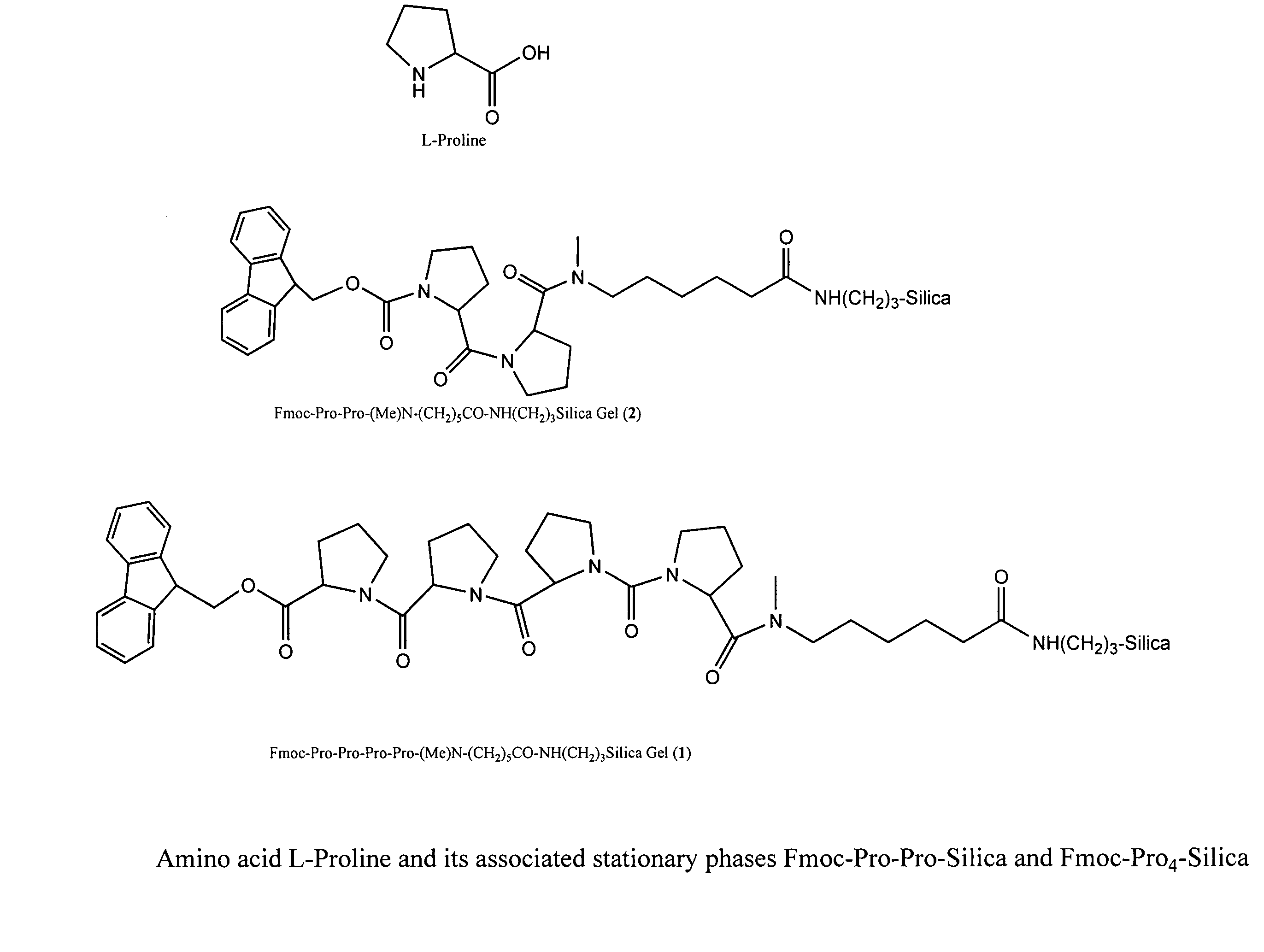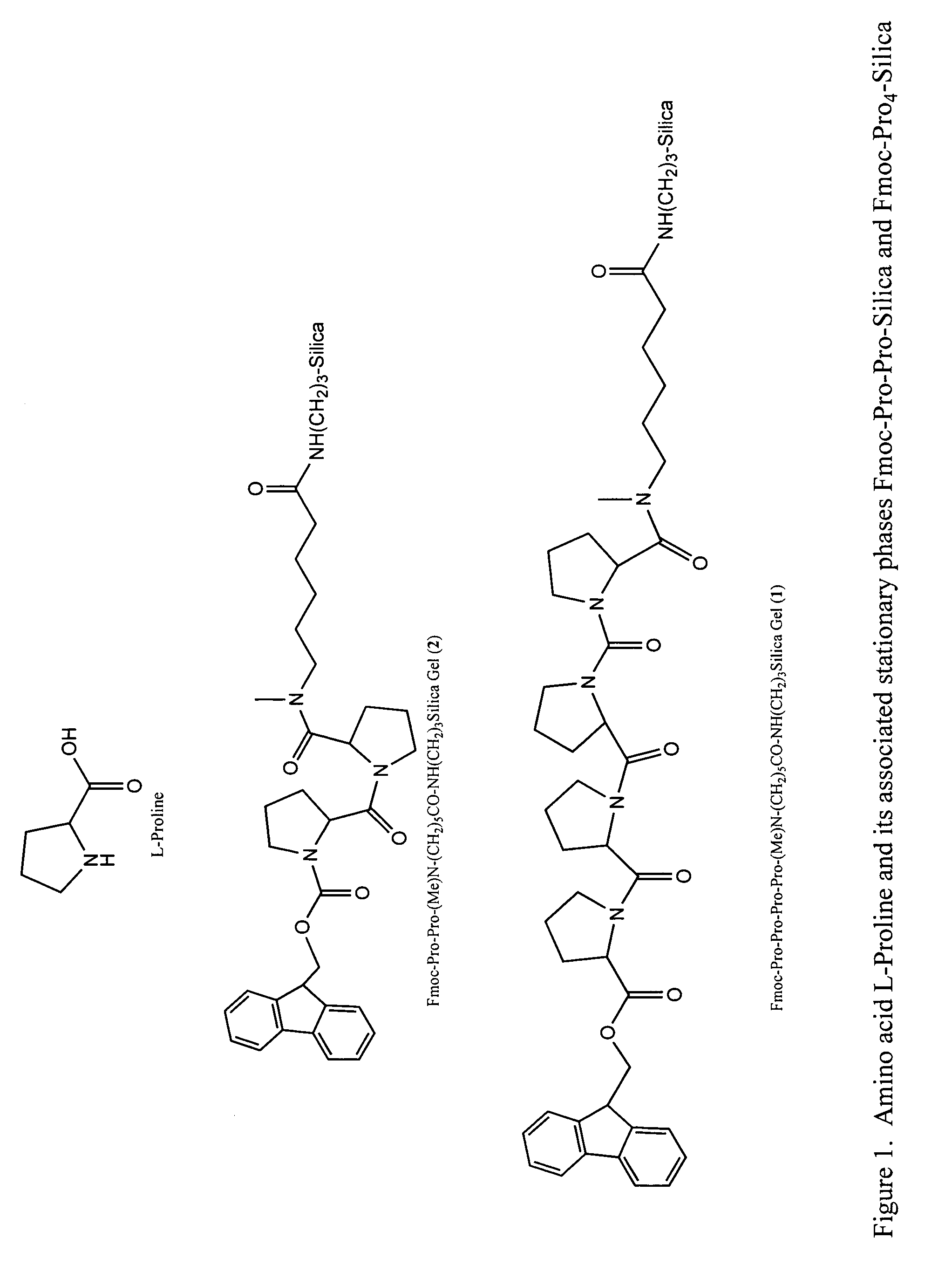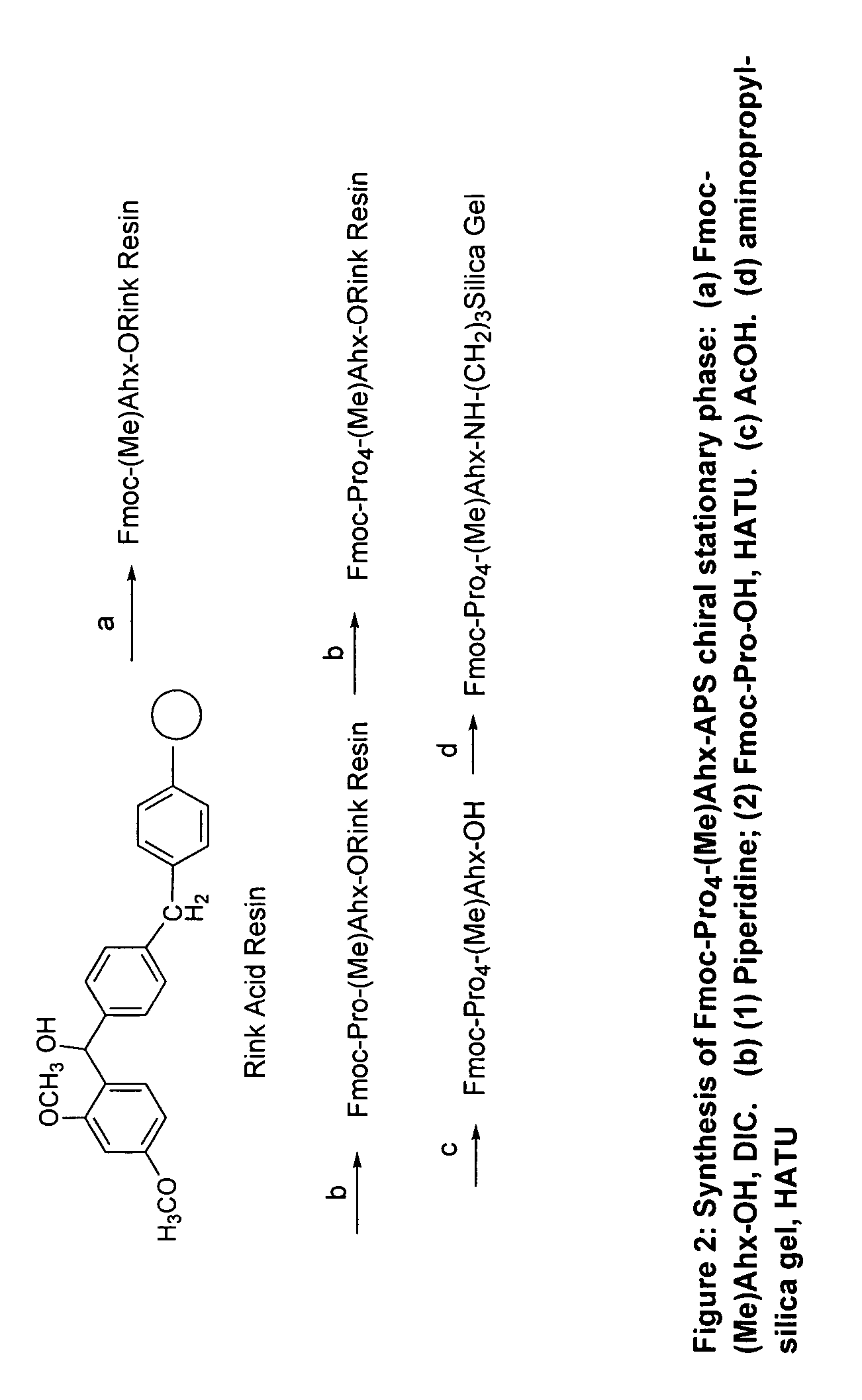Chiral columns with broad chiral selectivity
a chiral column and broad selectivity technology, applied in the field of chiral chemistry, can solve the problems of enantiomers, affecting drug activity, and only being of widespread utility for many compounds, and achieve the effect of improving the art of enantiomeric separation
- Summary
- Abstract
- Description
- Claims
- Application Information
AI Technical Summary
Benefits of technology
Problems solved by technology
Method used
Image
Examples
example 1
Preparation of Chiral Stationary Phase Fmoc-Pro-(Me)Ahx-APS
[0040]To 0.80 g of (Me)Ahx-APS silica prepared previously (the surface (Me)Ahx concentration is 0.64 mmol / g) are added mixtures of Fmoc-Pro-OH (3 equiv., 0.52 g), HATU (3 equiv., 0.58 g), and DIPEA (3 equiv., 0.20 g) in 8 mL of DMF. After agitating for 6 h, the resulting silica is filtered and washed with DMF, Methanol, and DCM to yield the desired chiral stationary phase. The surface Pro concentration is determined to be 0.57 mmol / g based on the Fmoc cleavage method. The resulting chiral stationary phase is packed into a 50×4.6 mm HPLC column using a standard slurry packing method.
example 2
Preparation of Chiral Stationary Phase Fmoc-Pro2-(Me)Ahx-APS
[0041]To 0.80 g of (Me)Ahx-APS silica prepared previously (the surface (Me)Ahx concentration is 0.64 mmol / g) are added mixtures of Fmoc-Pro-OH (3 equiv., 0.52 g), HATU (3 equiv., 0.58 g), and DIPEA (3 equiv., 0.20 g) in 8 mL of DMF. After agitating for 6 h, the resulting silica is filtered and washed with DMF, Methanol, and DCM to yield the desired chiral stationary phase. The surface Pro concentration is determined to be 0.57 mmol / g based on the Fmoc cleavage method. The resulting chiral stationary phase was packed into a 50×4.6 mm HPLC column using the standard slurry packing method.
example 3
Preparation of Chiral Stationary Phase Fmoc-Pro4-(Me)Ahx-APS
[0042]To 0.80 g of (Me)Ahx-APS silica prepared previously (the surface (Me)Ahx concentration is 0.64 mmol / g) were added mixtures of Fmoc-Pro-OH (3 equiv., 0.52 g), HATU (3 equiv., 0.58 g), and DIPEA (3 equiv., 0.20 g) in 8 mL of DMF. After agitating for 6 h, the resulting silica is filtered and washed with DMF, Methanol, and DCM to yield the desired chiral stationary phase. The surface Pro concentration was determined to be 0.57 mmol / g based on the Fmoc cleavage method. The resulting chiral stationary phase was packed into a 50×4.6 mm HPLC column using the standard slurry packing method.
[0043]The following examples set forth various chromatographic measurements. Therein, retention factor (k) equals to (tr−t0) / t0 in which tr is the retention time and t0 is the dead time. Dead time t0 was measured with 1,3,5-tri-t-butylbenzene as the void volume marker. Flow rate at 1 mL / min., UV detection at 254 nm.
PUM
| Property | Measurement | Unit |
|---|---|---|
| particle size | aaaaa | aaaaa |
| pass length | aaaaa | aaaaa |
| optically active | aaaaa | aaaaa |
Abstract
Description
Claims
Application Information
 Login to View More
Login to View More - R&D
- Intellectual Property
- Life Sciences
- Materials
- Tech Scout
- Unparalleled Data Quality
- Higher Quality Content
- 60% Fewer Hallucinations
Browse by: Latest US Patents, China's latest patents, Technical Efficacy Thesaurus, Application Domain, Technology Topic, Popular Technical Reports.
© 2025 PatSnap. All rights reserved.Legal|Privacy policy|Modern Slavery Act Transparency Statement|Sitemap|About US| Contact US: help@patsnap.com



